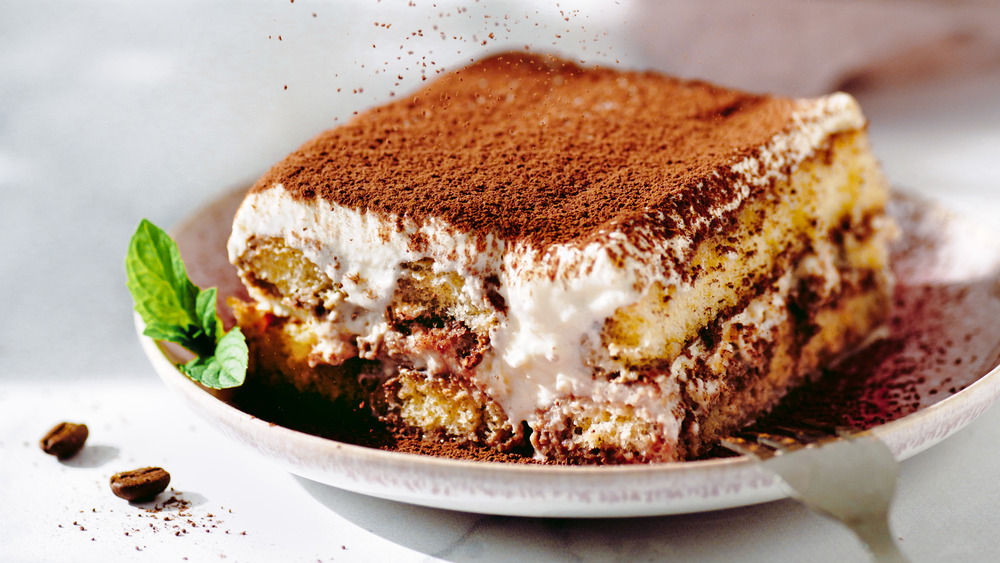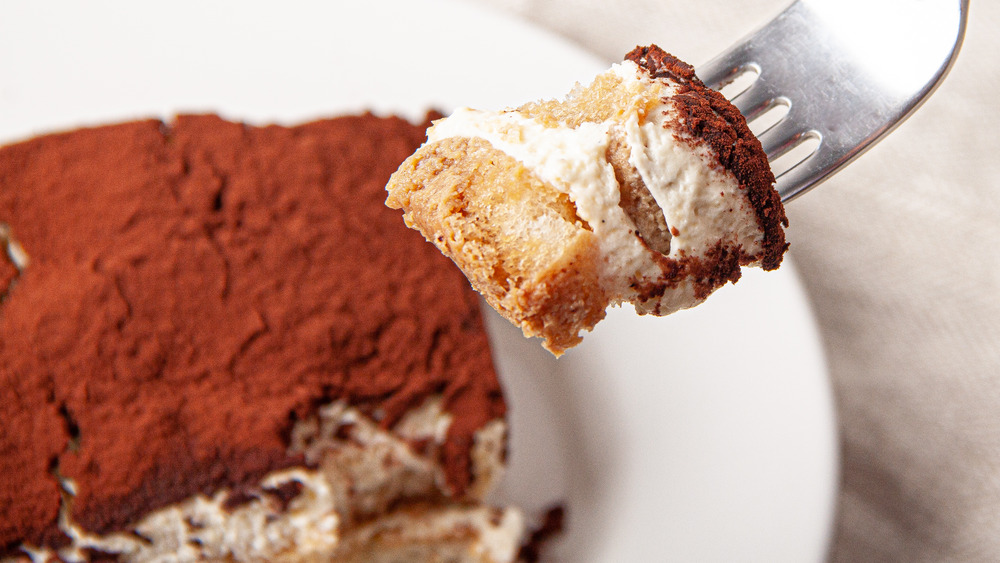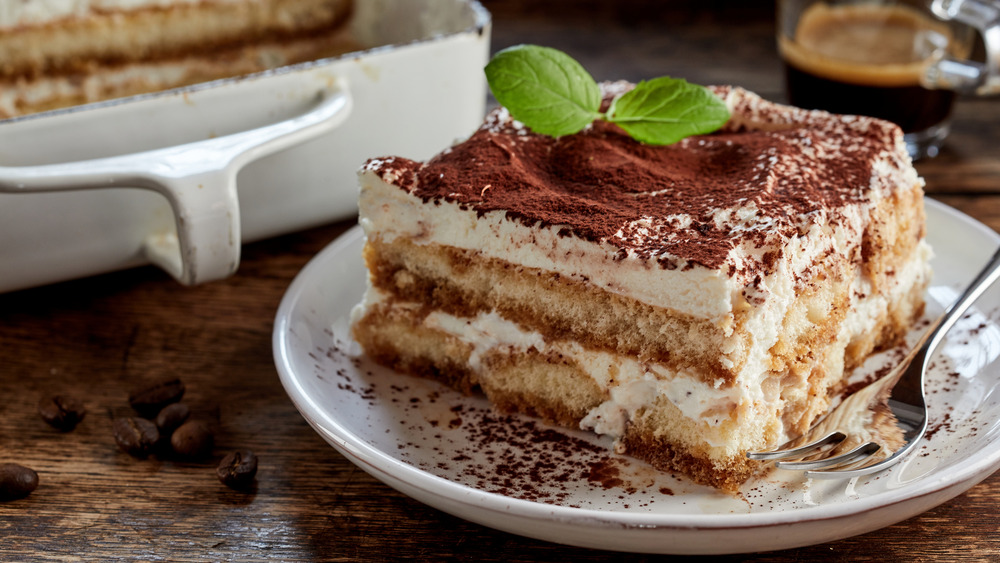The Tiramisu Rule You Should Never Break
Ah, tiramisu: that creamy, layered Italian dessert that's basically the very definition of indulgence. We love this smooth, cold confection of ladyfinger cookies, mascarpone cheese, and espresso — enough to take on the formidable, or at least time-consuming, task of making it at home. While whipping up tiramisu isn't complicated, it's still not as quick or easy as busting out a basic pan of brownies: "This is definitely a special-occasion dessert," registered dietician Kristin Carli told Mashed when she shared her recipe.
Aside from being prepared to take on many separate steps — from dipping cookies in coffee to cooking custard over a double boiler to whipping cream — there's another thing you should know before embarking on an afternoon of tiramisu-making. For the creamiest, most balanced result, you must refrigerate the dessert for several hours before digging in, according to Adam and Joanne Gallagher of the popular recipe blog Inspired Taste. The couple writes: "It is so important that you wait at least six hours before serving. In fact, it can be kept refrigerated one to two days and still be delicious." Clearly, tiramisu isn't an instant gratification type of dessert. So why is it so imperative that tiramisu languish in the fridge for so long? Let's find out.
Good things come to those who wait
You know how some dishes, such as soups and stews, seem to taste even better the next day or even days after they've been cooked? That's due to a number of reasons — including chemical reactions in the food — but is often chalked up to something along the lines of a "marrying of flavors," according to Serious Eats. When preparing certain dishes, while they taste great separately, they really shine when, over the course of a few days spent in the fridge, they start to blend together and complement each other. As Dr. Kantha Shelke, a spokesperson for the Institute of Food Technologists, told Forbes, "as the dish cools and sits over time, the different flavor and aroma compounds mingle together and develop more seasoned notes. The individual flavors are still there, but much less pronounced and the dish is therefore more mellow or rounded in flavor."
Well, something similar is at work when your lovingly constructed tiramisu is chilling out in the fridge. Because the dessert consists of layers of different ingredients, each with different flavors — the bland sweetness of the ladyfingers, the bitterness of the espresso, the vanilla notes of the mascarpone custard — it's important to let those flavors mix and mingle before diving in with your fork. As Adam and Joanne Gallagher explain at Inspired Taste, you've gotta "allow the ladyfingers to soak up all the flavors of the creamy filling, coffee, and [Marsala] wine."
Refrigeration is about texture, too
In addition to taste, there's a texture component with tiramisu, as well. The fatty, dairy-rich elements of the dish — heavy whipping cream, mascarpone cheese, even the egg yolks used in the custard — are prone to being runny and, well, flip-floppy when they're not adequately chilled. Part of the "wow factor" of serving a slice of tiramisu is being able to see all those lovingly constructed, alternating layers of ladyfingers and cream: You wouldn't want to go through all the hard work of creating those layers only to serve something too warm which runs out into a sloppy coffee-toned puddle on your cherished guests' dinner plates.
As Carli told Mashed when she shared her recipe, "I recommend refrigerating the dessert so that the tiramisu can chill thoroughly." So the next time you make tiramisu, don't rush the process: the results will be well worth the wait.


